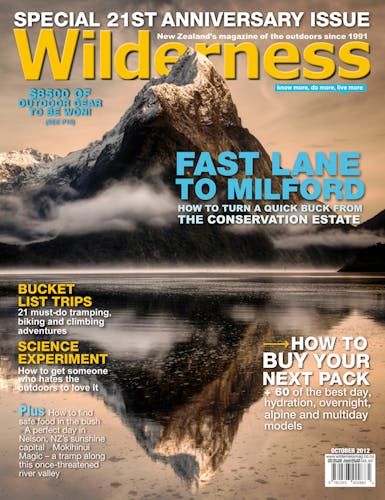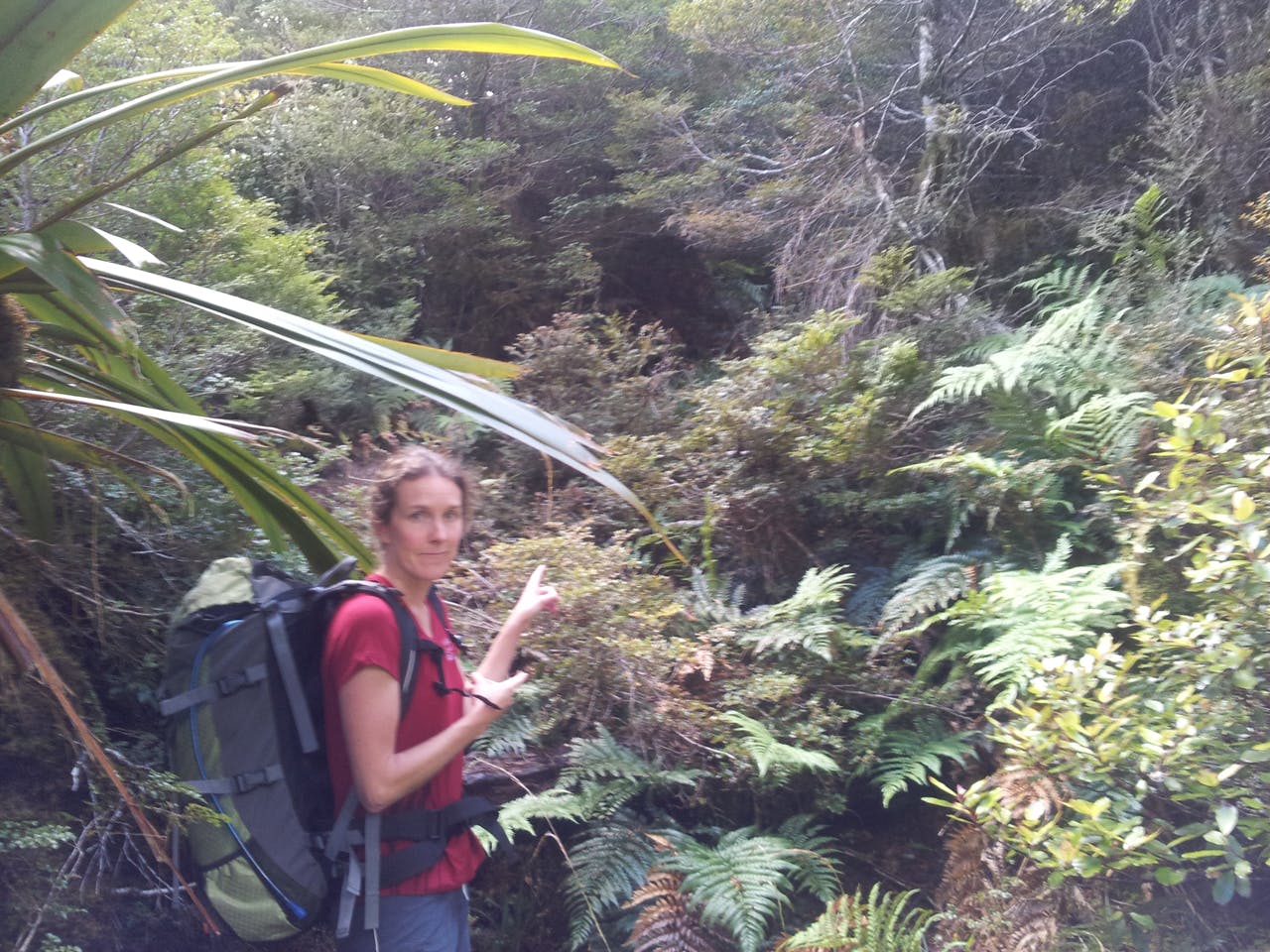Letter of the month
Family delight
I enjoyed Jo Stilwell’s articles on family tramping in the August 2012 issue.
I met Jo and David and their girls in Nelson Lakes National Park in January 2010 as they were nearing the end of a 14 day tramp. They had planned their tramp well and were well-equipped. I was impressed by where they had been – some experienced trampers in one hut who knew the area they had passed through were amazed they had taken kids there!
But I was also impressed by the parents fully involving the girls and taking a variety of activities and interests with them for the girls’ benefit.
All four members of the family were a delight to meet.
– Murray Grindlay, Wellington
* Our letter of the month correspondent receives a Tatonka Skill 30 front loading day pack with ventilated carrying system worth $189 courtesy of www.tightlines.co.nz. Send your letter to the editor for a chance to win.
Use them or lose them
We got off the well beaten Lake Waikaremoana Great Walk track for a change and diverted up the Huiarau Range to Whakatakaa Hut.
It was really nice to get back to the roots of tramping: a small lonely hut and a healthy bit of bush-bashing. The track was smashed by snow and wind damage about five years ago, with no real track work done since.
The trip raised a few questions around how much of DOC’s resources should be poured into tracks and huts that get (judging by the hut book) only a dozen or so visits a year?
We came no closer to an answer, but it is apparent that we users have to use it or lose it. The more people who use the track, the easier the track will be to follow therefore opening the track to more people. I know visitor centres around the country actively discourage less experienced users away from some backcountry tracks because the tracks can be vague from lack of use. Such is the case with the track to Whakatakaa Hut.
The use of choppers for transporting heli-hunters (half of hut users according to Whakatakaa Hut book) and probably DOC staff when checking and maintaining the huts in the area, is probably adding to the problem of overgrown tracks.
With DOC budgets slashed, fewer backcountry users and a reliance on volunteers, how will the backcountry huts and tracks survive?
Maybe the real issue is simply not enough people want this experience, and with many huts coming to the end of their natural lives, maybe we are coming to the end of a backcountry hut era!
Reason enough to bag a few this summer.
– Rob Franklin, Walking Legends, Waikaremoana
Huts mustn’t be lost
I am writing to express my concern that the hut system is in jeopardy.
I am 16 years old and moved with my family from Atlanta in the US to New Zealand to live for three-and-a-half years. Our family wanted a lifestyle change, and decided to live in Nelson for its proximity to the mountains and abundant recreational opportunities.
I really enjoyed tramping and hut-bagging while we were there. I have built up an extensive knowledge of the hut system as well as its administrative challenges, and I now have the goal of visiting every hut in the country in my lifetime. I know that DOC is losing some of its funding for the hut system and I have heard that it might reduce the number of huts it manages down from more than 950 to around 600.
I personally think the government should continue to fund this unique hut system to keep the number at around 1000. I understand this is hard to justify due to the limited number of people who use some huts, in which case more groups like Permolat need to be formed.
Permolat, a volunteer community group affiliated with the Remote Huts West Coast website, do a great job of saving huts on the West Coast that DOC might otherwise have removed. Many of these huts are destinations in and of themselves and I would hate to see them removed just for the sake of not having the funding to carry out maintenance on them.
Whatever we do, we must make sure not to lose too many of these precious resources.
– Mitchell Everly, Atlanta, USA
Call first
Great to see the feature on the Hikurangi Range (Wild range, September 2012).
I’d just like to add that permission is needed from the landowners at the Rangitane road end (Kawhatau base access) and the Mangakukeke road access (Purity Hut Track).
The contact details are available from the DOC Manawatu Rangitikei Area Office (P: 06 350 9700).
– Andrew Mercer, DOC programme manager visitor assets








